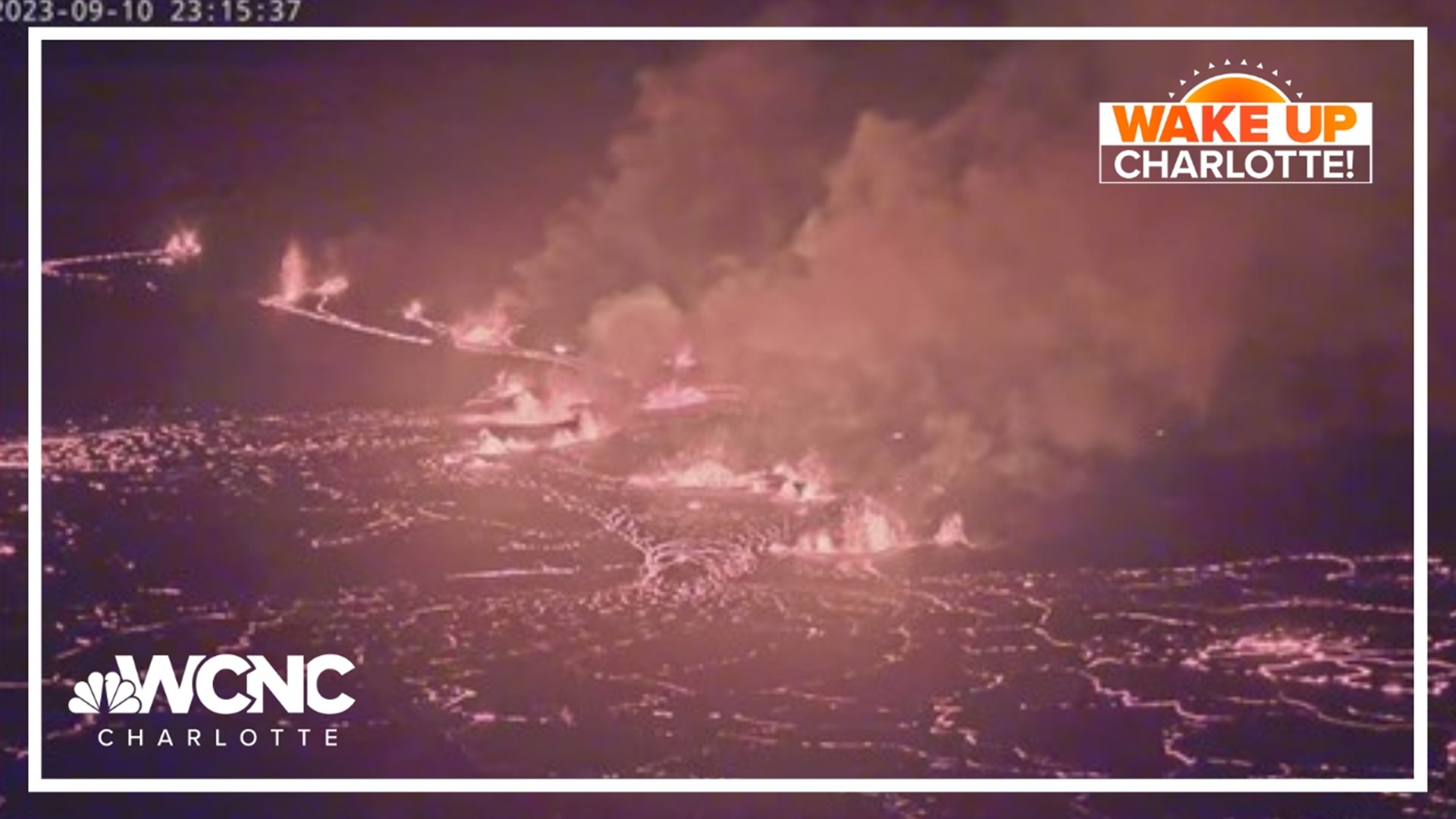HAWAII VOLCANOES NATIONAL PARK, Hawaii — One of the most active volcanoes in the world is erupting for the second time this year, and one website is giving all of us a front-row glimpse into this magnificent force of nature.
A livestream from a camera positioned within the caldera from USGS Hawaiian Volcano Observatory first started streaming on Sept. 6 and shows bubbling molten lava and clouds of smoke pouring out. The Hawaii Volcano Observatory first reported they observed an eruption on the summit of Kīlauea the afternoon of Sept. 10.
This most recent eruption is currently a safe distance from nearby residences, officials with the U.S. Geological Survey said. The most recent USGS update issued around 8:30 a.m. on Tuesday reported several lava fountains remain active on the western side of the downdropped block within Kīlauea's summit caldera.
The easternmost vents on the downdropped block and the westernmost vents in Halema‘uma‘u became inactive Monday, and the remaining active vents on the downdropped block span approximately 0.5 miles, according to the U.S. Geological Survey.
These vents are roughly east-west trending and are feeding channelized lava flows traveling in north and west directions onto Halema‘uma‘u crater floor. The eastern rim of Halema‘uma‘u crater has been buried by new lava flows, and pāhoehoe lava flows — the kind that have smooth, unbroken surface — cover most of the crater floor except high ground formed during previous eruptive activity in the southwest portions of the crater. A significant amount of lava has intruded beneath the pre-existing crust within Halema'uma'u.
Kīlauea, which means much spreading in Hawaiian, is the youngest and most active volcano on the island of Hawaiʻi, with a consistently active summit caldera that frequently hosts lava lake-style eruptions, according to the National Park Service. The federal agency monitors the volcano because it is at the heart of what is known today as Hawaii Volcanoes National Park. Parts of the park remain closed due to ongoing wildfire risks.
According to Native Hawaiian tradition, Halemaʻumaʻu crater is the home of the volcanic deity Pelehonuamea. The volcano goddess is believed to reside in Halemaʻumaʻu crater, a persistently active pit within the summit caldera, and sheʻaumakua, family or deified ancestor for some people of the districts of Puna and Kaʻū on the island of Hawaiʻi, according to NPS.
Halemaʻumaʻu crater has a long history of lava lake-style eruptive events. In June, Kilauea erupted for several weeks but did not cause any damage. In 2018, an eruption destroyed an estimated 700 homes.
The USGS's Volcano Notification Service provides the most recent updates on live volcanoes across the U.S., and you can sign up for those free notifications here.
You can watch the livestream here.

